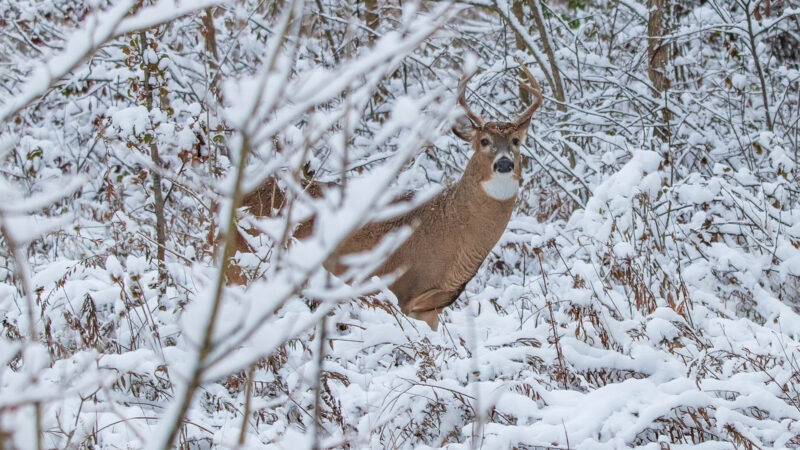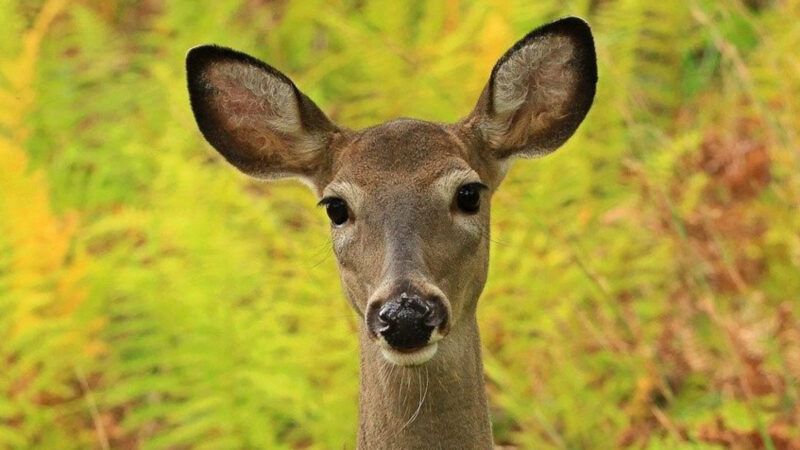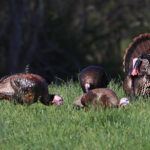Have you ever been spotted by a deer while hunting? If you have, perhaps it raised the question: What do deer see? Believe it or not, understanding a whitetail’s vision contributes to becoming a more successful bowhunter.
Knowing what deer see and how they see it can inform your camo choices, help you create better setups, and know when and how to move to avoid being detected.
Noted wildlife biologist with HuntStand, and the previous CEO of the QDMA, Brian Murphy, was involved with the earliest testing conducted at the University of Georgia in the early 1990s, and he remains closely connected with the continued research and testing on the topic of deer vision.
Let’s review some of Murphy’s insights and how they apply to hunting.

Are Deer Color Blind?
Deer aren’t color blind. We’ve all heard the myth that deer are completely color blind. During our discussion, Murphy set the record straight. “The allegations that deer are completely color blind is false,” he said. “Their vision is essentially the same as a human who is red-green color blind.
Basically, their vision is limited to short and middle wavelength colors — blues and greens. That’s why they don’t see reds and oranges the way humans do. To deer, these colors appear dark yellow or brown.”

Do Deer See Differently Than Humans?
To truly understand how a deer’s eyeballs are different from a human’s, we must get scientific.
“Mammals have two types of cells in their eyes known as rods and cones,” Murphy said. “Rods are nighttime cells, cones are daytime and color cells.
Deer have a higher concentration of rods than humans, but a lower concentration of cones. This enhances their nighttime vision but restricts their daytime and color vision.
“Deer pupils open substantially wider than human pupils, giving them nine times the ability of humans to gather light,” Murphy continued. “Deer also have a reflective layer in the back of their eyes called tapetum.
Its mirror-like properties cause the eyes to appear shiny when light contacts them and allow deer to use the same light twice, where humans only get to use it once.”
Murphy said ultraviolet light (UV) is also a factor in deer vision. “Human eyes have a protective filter that blocks almost all UV light from entering, which helps us distinguish fine detail,” he explained.
“In contrast, deer eyes aren’t equipped with a UV filter. Though they see colors in the UV spectrum better than we do, they can’t distinguish fine detail.”
According to Murphy, deer have a 300- to 310-degree field-of-view (FOV). In contrast, a human’s FOV falls into the 120-degree neighborhood. “The difference is in the eye placement,” he said.
“A deer’s eyes are located on the sides of its head, which means they have only two blind spots — right in front of their face and directly behind them.”
Nighttime vision and spotting movements are a whitetail’s strong suits. “People often conclude that deer have better eyesight than humans,” he said. “That’s really not true. They beat us at night and at spotting movements.
But, they’re poor at identifying three-dimensional objects. That’s why they bob their head once they’ve spotted a human who isn’t moving. It helps them gain a better dimension of the subject so that they can identify it.”

Applying the Facts
“Applying these scientific facts to hunting seems confusing, so I’ll translate them into discernible suggestions,” Murphy said. “First of all, you can shine a blue light on your clothing after dark to check for UV.
If it doesn’t shine, you’re fine. If it shines, you are ‘UV-hot,’ meaning you would be more visible to deer early morning and late evening when UV light is highest. And there are products out there that kill UV.”
Since deer see blue and light colors exceptionally well, Murphy suggests avoiding such colors while hunting and scouting. “Tons of hunters wear blue jeans into the deer woods,” he said.
“That’s a detriment to staying undetected since deer see deep into the blue spectrum. Wear camo that blends with your surroundings, and be mindful of every movement you make. Deer are wired to identify sudden movements, so make them fluidly, and avoid moving at all when they’re alert.”
Author’s note: Brian Murphy said that even more info is out about deer vision. Various resources with Dr. Karl Miller of the University of Georgia Deer Research Laboratory can be found online, including this podcast from 2019.
What about your headlamp? Does your headlamp spook deer? Read this ARTICLE for a closer look.

 By
By 



